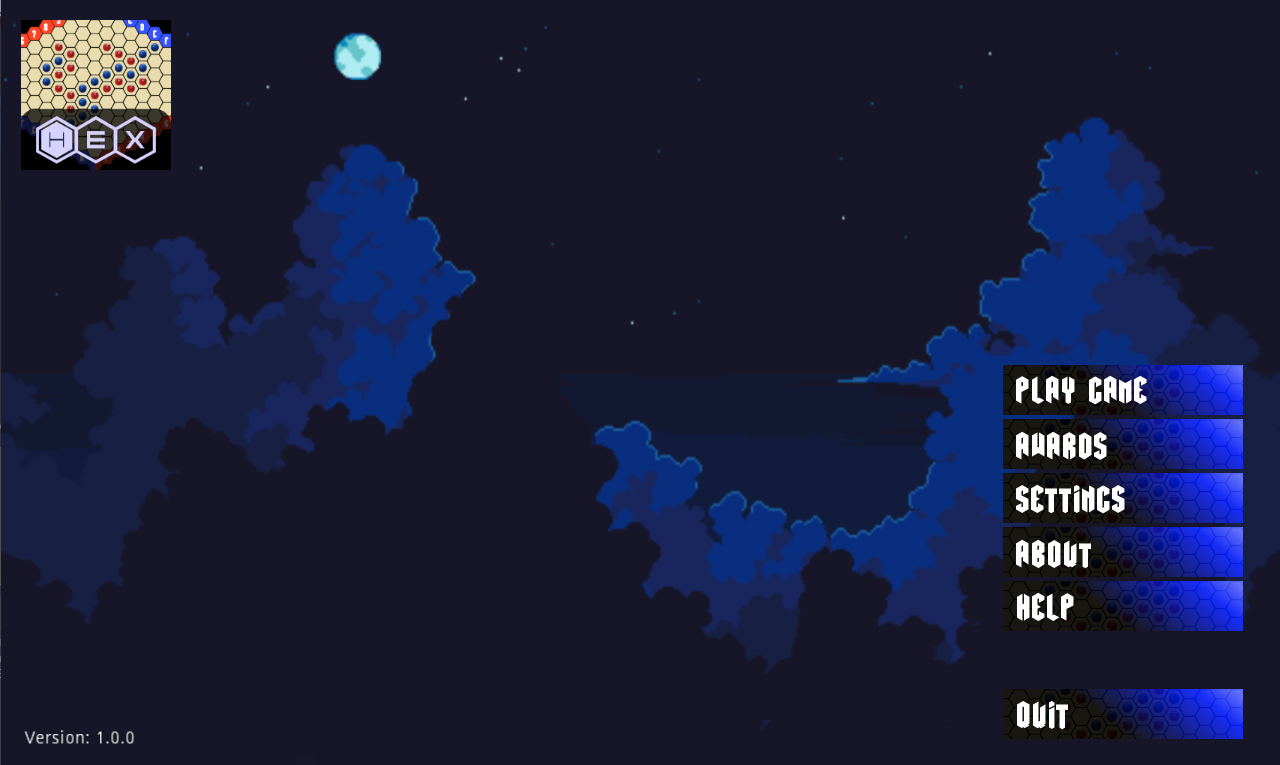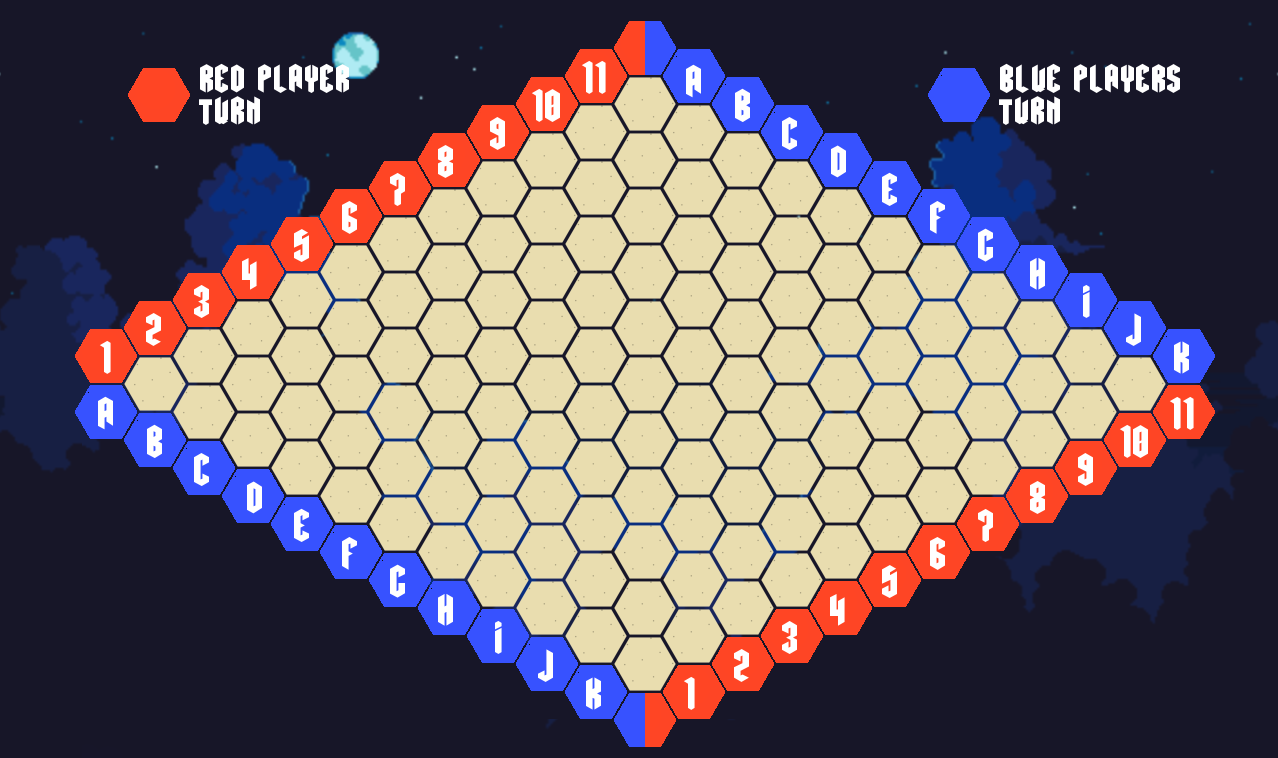 Hex-Retro is a remake of the MSDOS game Hex from 1983. Lazy Mutt Games already has this game online written in Javascript, but we decided to re-write it in Godot and release it on Itch.io and Game Jolt.
Hex-Retro is a remake of the MSDOS game Hex from 1983. Lazy Mutt Games already has this game online written in Javascript, but we decided to re-write it in Godot and release it on Itch.io and Game Jolt.
Hex-Retro is a computer translation of the strategy game of the name Hex: a 11x11 grid of hexagonal cells makes up the four-sided game board; each of the two players (black and white) is assigned a pair of opposing sides.  The white player moves first, and both challengers take turns placing pieces on the board. To win, either player must form an unbroken sequence of pieces connecting their two colored sides. Hex-Retro may be played human vs. human or human vs. machine, plus a demo mode which lets you watch as two machine opponents match wits with one another.
The white player moves first, and both challengers take turns placing pieces on the board. To win, either player must form an unbroken sequence of pieces connecting their two colored sides. Hex-Retro may be played human vs. human or human vs. machine, plus a demo mode which lets you watch as two machine opponents match wits with one another.
History of the game:
Hex (also called Nash) is a two player abstract strategy board game in which players attempt to connect opposite sides of a rhombus-shaped board made of hexagonal cells. Hex was invented by mathematician and poet Piet Hein in 1942 and later rediscovered and popularized by John Nash.
It is traditionally played on an 11×11 rhombus board, although 13×13 and 19×19 boards are also popular. The board is composed of hexagons called cells or hexes. Each player is assigned a pair of opposite sides of the board, which they must try to connect by alternately placing a stone of their color onto any empty hex. Once placed, the stones are never moved or removed. A player wins when they successfully connect their sides together through a chain of adjacent stones. Draws are impossible in Hex due to the topology of the game board.
Despite the simplicity of its rules, the game has deep strategy and sharp tactics. It also has profound mathematical underpinnings related to the Brouwer fixed-point theorem, matroids and graph connectivity. The game was first published under the name Polygon in the Danish newspaper Politiken on December 26, 1942. It was later marketed as a board game in Denmark under the name Con-tac-tix, and Parker Brothers marketed a version of it in 1952 called Hex; they are no longer in production. Hex can also be played with paper and pencil on hexagonally ruled graph paper.
From Wikipedia here